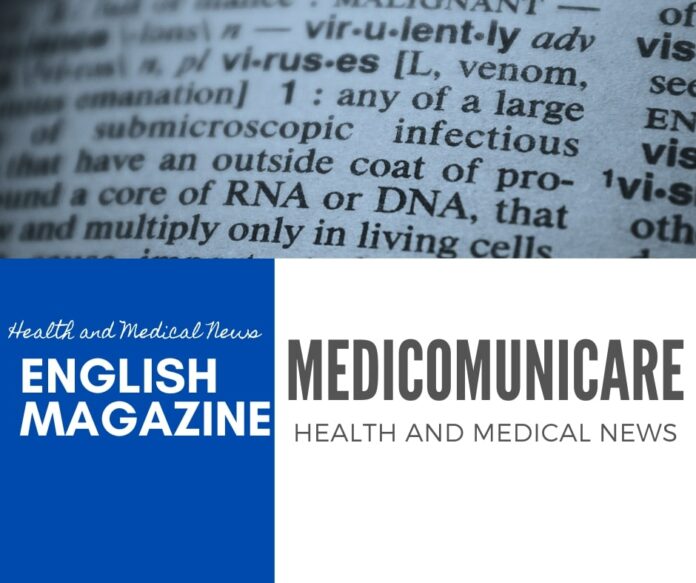For more than 30 years, scientists have studied how the myogenic determination gene number 1 (MyoD) protein binds DNA to modify the gene expression of muscle stem cells. Similar to the instant kung fu learning program downloaded into “The Matrix” Neo’s brain, transcription factor MyoD plugs into muscle stem cell DNA and reprograms the cells to build muscle. MyoD also comes to the rescue when muscle tissue needs to be repaired after injury or to restore minor damage that occurs with athletic training or other physical activity. The transcription factor rallies nearby muscle stem cells to expand in number and become muscle cells capable of regenerating harmed muscle fibers. Like Spiderman hiding in plain sight as the unassuming photojournalist Peter Parker, this activator of genes specific to muscle has been harboring a secret identity.
Scientists at Sanford Burnham Prebys and their international colleagues published findings in Genes and Development demonstrating that MyoD has its own Jekyll-and-Hyde twist, turning from a gene activator to a gene silencer. The research team examined MyoD binding events in human fibroblast cells during the process of MyoD reprogramming them into skeletal muscle cells. This experimental setting mimics the physiological process of muscle stem cells reprogramming into the myogenic lineage that occurs during muscle regeneration. One-third of the binding events were found at the conventional MyoD binding sites (the myogenic E-box motifs) at regulatory elements of the genome, consistent with MYOD’s traditional role as a gene activator.
More than one-half of the binding events, however, occurred at the regulatory elements of downregulated genes, where DNA is packaged in such a way as to be less accessible to being transcribed into proteins, and coincided with the presence of DNA binding sites other than the E-box motifs. This finding challenges the dogma that historically restricts MyoD DNA binding properties to the E-box motifs. Furthermore, the scientists observed that the MyoD binding events associated with gene repression were found at genes involved in cell growth, cell proliferation, cell-of-origin as well as alternative cell lineages. This observation fits into the proposed new role of MyoD as a driver of cell reprogramming by removing the cell’s prior gene expression “furniture.”
Basically, scientists discovered that MyoD has the ability to promiscuously bind the DNA at previously unexpected places. These locations were occupied by transcription factors that were promoting the expression of the cell’s origin lineage genes, so MyoD is binding there to erase the previous lineage prior to turning cells into the myogenic lineage. For researchers this is an opportunity to expand current ideas about how transcription factors operate, since this is an example how the same transcriptional activator can also play a repressor role at the very beginning of the process of cell transdifferentiation or reprogramming. These informations will help advance efforts to develop regenerative medicine therapies and to better understand the process of cellular reprogramming itself.
MyoD-mediated repression of transcription included the downregulation of growth factor-responsive, cytokine-responsive and mitogen-responsive genes, suggesting that it might prevent a promiscuous activation of gene expression in muscle progenitors exposed to a multitude of extracellular signals. This condition typically occurs when muscle progenitors are exposed to developmental or regeneration signals during embryonal and adult skeletal myogenesis, respectively. In particular, during skeletal muscle regeneration, the activation of MuSCs entails loss of anatomical insulation from the surrounding environment that is provided by the myofiber basal lamina. Consequently, activated MuSCs are exposed to a plethora of regeneration cues and signals, which would activate gene expression promiscuously if not properly interpreted.
Next, the research team plans to explore what happens when MyoD’s repression of the cell’s prior identity is incomplete. This phenomenon may help explain why some athlete’s muscles recover better as they get older or why some people suffer from the age-related muscle mass deterioration and frailty known as sarcopenia at a younger age. The research team also shared that children suffering from muscular dystrophy experience a transition period called the honeymoon. For a length of time that varies with each child, their bodies can still deal with the disease by regenerating their muscle. A better understanding of this honeymoon period, could make scientist be able to use regenerative medicine approaches to extend it for as long as possible.
This is how senior scientist Dr. Lorenzo Puri explained the whole implications: “There are a variety of growth factors or regeneration cues that typically encounter these cells during the regeneration period. MyoD is able to be very selective in repressing most of the gene expression that would be activated by these cues in order to curate the proper program for building muscle. In regenerative medicine, we hope to treat certain medical conditions by turning one cell type into another, one pathological cell into one physiologically normal or even therapeutic cell. And now we know that an important task is the repression of the previous lineage’s gene expression furniture. It may be that small alterations in MyoD’s silencing role are tolerated by the body but progressively impair muscle function. Better understanding this concept may have an enormous impact in terms of biomedical applications for regenerative and sports medicine for athletes and sarcopenia patients”.
- Edited by Dr. Gianfrancesco Cormaci, PhD, specialist in Clinical Biochemistry.
Scientific references
Nicoletti C et al. Genes Dev. 2025 Aug 6; 39:1-19.
Fong AP, Yao Z et al. Dev Cell. 2012; 22: 721–735.
Puri PL, Sartorelli V. J Cell Physiol. 2000; 185:155.
Cooper RN et al. J Cell Sci. 1999; 112: 2895–2901.
Jen Y, Weintraub H et al. Genes Dev. 1992; 6:1466.
Davis RL, Cheng PF et al. Cell 1990; 60: 733–746.
Weintraub H et al. PNAS USA. 1989; 86:5434–38.

